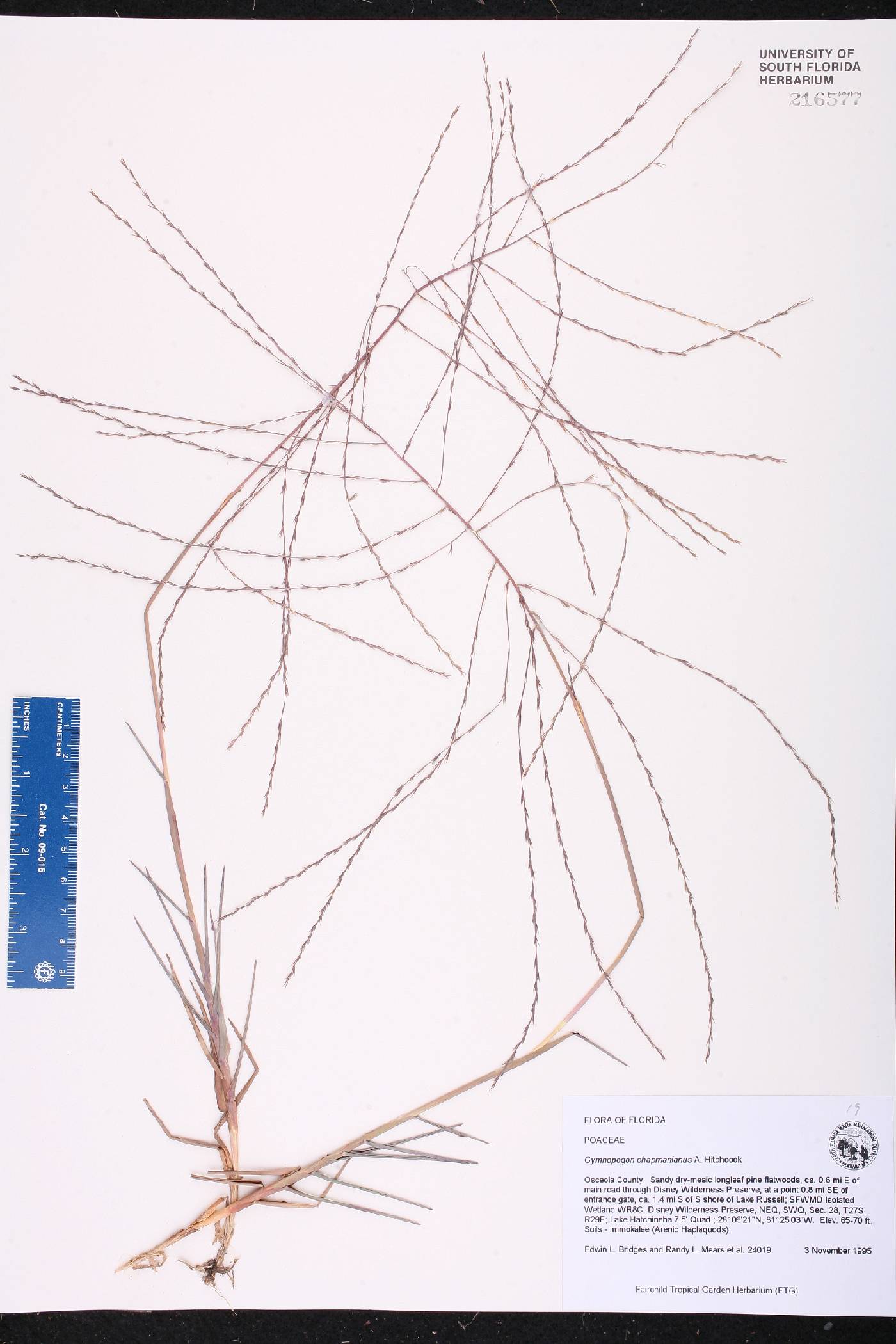|
Family: Poaceae |
Plants usually perennial; often cespitose in appearance, rhizomatous. Culms 10-100 cm, erect to decumbent, simple or sparingly branched. Leaves cauline, evidently distichous; sheaths often strongly overlapping; auricles absent; ligules 0.1-0.5 mm, membranous, ciliate; blades linear to ovate-lanceolate, lacking midribs. Inflorescences terminal, panicles of spikelike branches, these subdigitately or racemosely arranged, usually strongly divergent to reflexed, sometimes naked basally, spikelets borne singly. Spikelets widely spaced to slightly imbricate, appressed to the branches, shortly pedicellate, laterally compressed, with 1-2(4) florets, only the lowest 1(2) floret(s) bisexual; rachilla extensions present, usually with a highly reduced, sterile floret(s); disarticulation above the glumes, florets falling together. Glumes subequal, usually exceeding the bisexual florets, narrow, acuminate, 1-veined; lemmas of bisexual florets 3-veined, midveins prominent, apices minutely bidentate, usually awned from between the teeth, rarely unawned; anthers (2)3. x = 10. Name from Greek gymnos, naked, and pogon, beard, alluding to the naked prolongation of the rachilla found in many species. Spikelets 1-fld (in ours), articulated above the glumes, sessile, appressed and remote along two sides of a slender triangular rachis; glumes subequal, subulate, 1-veined; lemma shorter than the glumes, narrow, rounded on the back, obscurely 3-veined, tipped with a short straight awn; rachilla often prolonged behind the palea, bearing at its summit a greatly reduced lemma or short awn; ours perennial, with short erect culms from a knotty rhizome, minute ligule, stiffly spreading lvs, and a large panicle of very slender, elongate, divaricate spikes. 10, New World. Gleason, Henry A. & Cronquist, Arthur J. 1991. Manual of vascular plants of northeastern United States and adjacent Canada. lxxv + 910 pp. ©The New York Botanical Garden. All rights reserved. Used by permission. |


